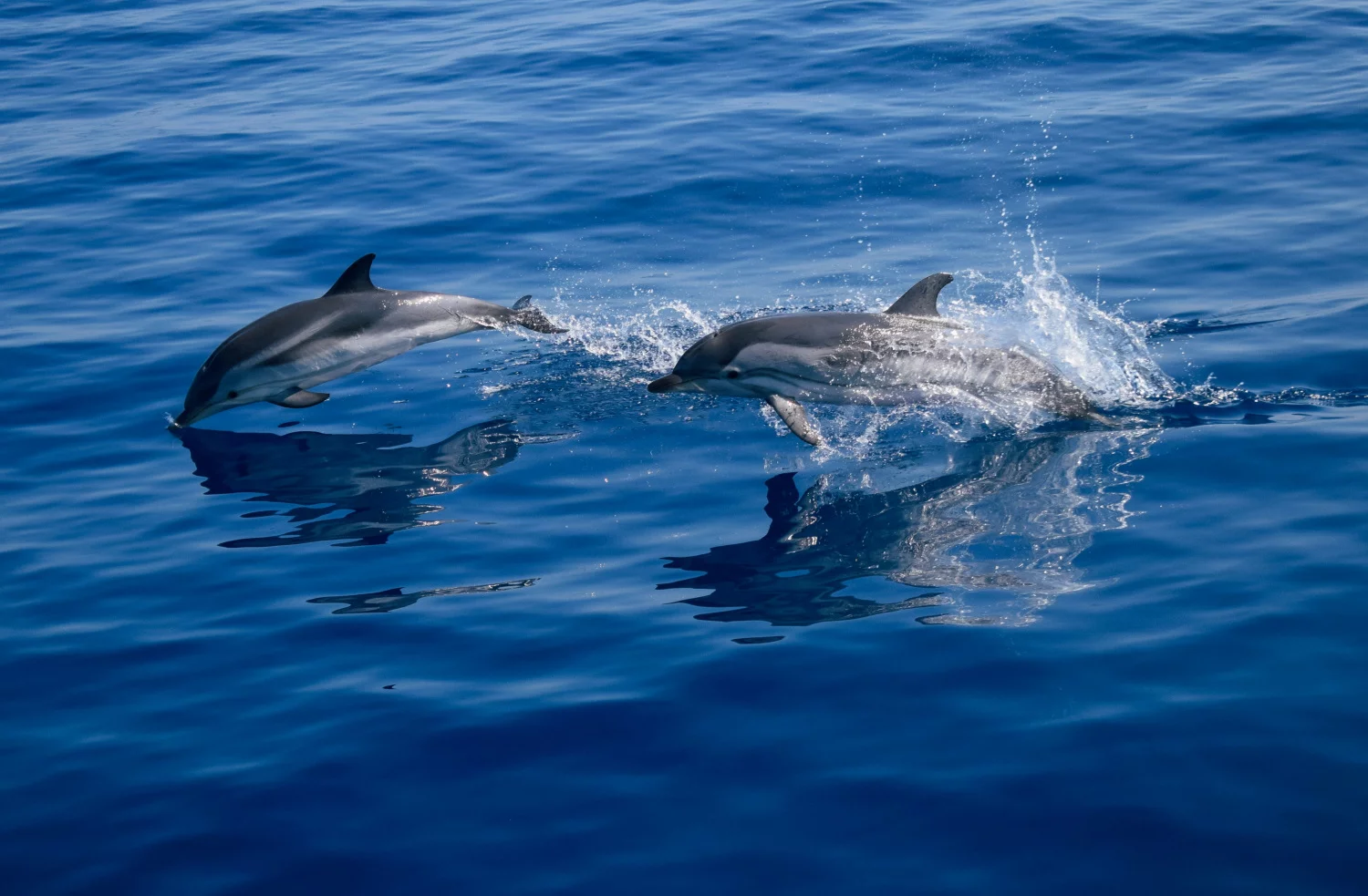Habitat Directive: Annex IV. MED Conservation Status: Unknown
IUCN Red List: ‘Least Concern’ (LC) at the global level and, recently at the Mediterranean level, with the exclusion of the Gulph of Corinth sub-population, was proposed as ‘Vulnerable’ (VU). It is the most common and abundant dolphin species in the Mediterranean Sea: an estimated 90,000 individuals between the Pelagos Sanctuary and the central Tyrrhenian Sea, 40,000 in the southern Tyrrhenian Sea, 30,000 in the Ionian Sea and over 20,000 in the southern Adriatic.
Sighting possibilities
It is widely distributed in temperate and tropical water around the world. In the Mediterranean, it is the species most easily sighted off-shore and in deeper water. It is rarely sighted on the shallow water of the Strait of Sicily. They are often found in a large group, even 100 specimens, and are sometimes seen in association with other species, in mixed groups.
How to recognise it at sea
Size: average length of 2 meters and 80-120 kg of weight. Males are slightly larger than females.
Its body is tapered and characterised by stripes, similar to the common dolphin. The dark grey colouration of the back is distinct from the flanks, which become lighter and on which conspicuous light stripes run from behind the eyes to the pectoral fins and the white of the belly. The Head and anterior back are however darker than the posterior dorsal area near the caudal fin. A diagnostic element for distant recognition is the colouration of the flanks, with the obvious lighter lateral lines. The dorsal fin is typically falcate, the melon distinct from the rostrum, which is elongated and thin, with a long, dark beak.
Biological notes
It has a very varied diet and is well adapted to the availability of prey in various areas it frequents at different times of the year. To reach prey, the striped dolphin can dive to a depth of up to 700 meters. Very social, like the majority of delphinids, it reaches sexual maturity at 9 years; in the Mediterranean, the mating usually takes place in autumn and, after 12 months of gestation, a baby just 80 cm and 11 kg is born. Weaning can last 1-2 years, after that female will wait 2-3 years for the next birth. The average lifespan for the species is 57 years. It has been observed that striped dolphins segregate into different ‘schools’ according to age group: all juveniles, all adults and, mothers with young.
Curiosities
- Like many other delphinids, it communicates and uses echolocation through clicks and whistles. It seems able to produce both simultaneously.
- It is a very acrobatic species: at sea, it likes to play on the bow waves of ships and, make very high jumps (up to 7 meters) with ‘rot-tailing’ and ‘spaning’. Even today, the meaning of this behaviour is not entirely clear to researchers (fun/parasite release/challenge).
- Striped dolphins were victims of several mass die-offs caused by a virus called ‘morbillivirus’ between 1990 and 1992. Researchers believe that high levels of contaminants and other environmental factors somehow make this species more susceptible to viral infections/li>





